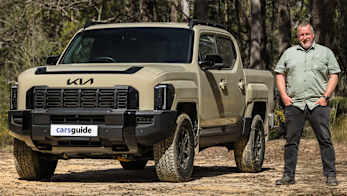A cancellation of potential changes to the national construction code will curtail electric vehicle adoption, according to the Electric Vehicle Council (EVC).
EV adoption has slowly but surely been climbing in Australia as new models at a variety of price-points flood onto the market.
Despite this the federal, state and territory governments decided to put recent touted changes to the National Construction Code on hold.
-
Fact or fiction? The truth could determine the future of electric cars | Opinion
-
Checkmate for BYD? Chinese brand's new charge station roll-out could be the blueprint for fast-charging the world over as it moves to rival Tesla's Superchargers that would be a boon for future versions of the 2026 BYD Seal, Dolphin and Sealion 7
-
Aussie electric car breakthrough! How this game-changing technology could transform your Mitsubishi Outlander PHEV and Eclipse Cross plug-in hybrid into a energy bill cutting beast
These change were aimed at adding EV charging provisions to encourage or require pre-wiring for home charging solutions for new homes, which could have streamlined the process for every new home to be EV-ready.
These changes were put on ice as the various governments seek to “streamline” the construction of new dwellings until 2029 in a bid to boost housing supply.
The EVC argues not changing the code at this time undermines Australia’s efforts to reach climate targets.
“This is a missed opportunity to embed practical, low-cost electrification measures into our building standards at a time when urgent action is needed to achieve the nation’s 2035 emissions reduction goals,” said EVC CEO, Julie Delvecchio.
“Simple measures like a dedicated circuit for EV charging at homes which would add only $200 to the cost of a new home while making it easier for Australians to charge their cars at home and escape the eye-watering cost of petrol have been left out of the updated Code.
.jpg)
"Every home built without these provisions will be more expensive to retrofit later, creating unnecessary barriers for Australian families wanting to make the switch to electric vehicles,” she said.
Many advocates of vehicle electrification argue Australia should follow in the footsteps of the UK, which has mandated EV charging infrastructure for new builds. Freestanding homes in the UK require one charging point or cable route for each parking space, while “multiple dwellings” (apartment buildings and the like), must have one charge point or cable route for every parking space, or one in every five parking spaces if certain conditions are met.
The UK’s code exempts certain buildings, but enforces the same laws on major renovations.
.jpg)
In Australia, the National Construction Code, a 2000 page document, is meant to be updated every three years, although recently it has been paused since 2022 (and before that hadn’t had major changes in a decade). The government argued the recent pause until 2029 was required to help it cut red tape and lower costs as it is falling behind on its target to deliver 1.2 million new homes by the same date.
The most recent changes in 2022 already require new builds to be “EV ready” but not “EV capable", meaning they need to have at least the electrical infrastructure to be able to support charging in the future but don’t require charging points to be pre-wired to parking spots. The current NCC does stipulate that up to 7kW of power per parking spot, at least providing for more power than a wall socket can provide (typically 2.4kW).
Despite support from construction industry bodies like the Master Builders Association, the EV Council is not the only body which has criticised the government’s decision to pause updates to the code, with various other bodies like the Australian Institute of Architects also issuing statements criticising the decision.













.jpg)






.jpg)

.jpg)
.jpg)
.jpg)
.jpg)

.jpg)
.jpg)
